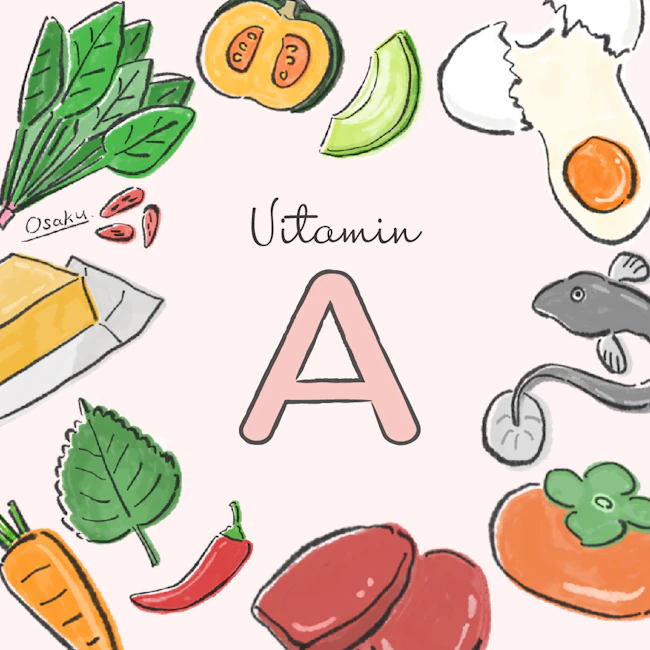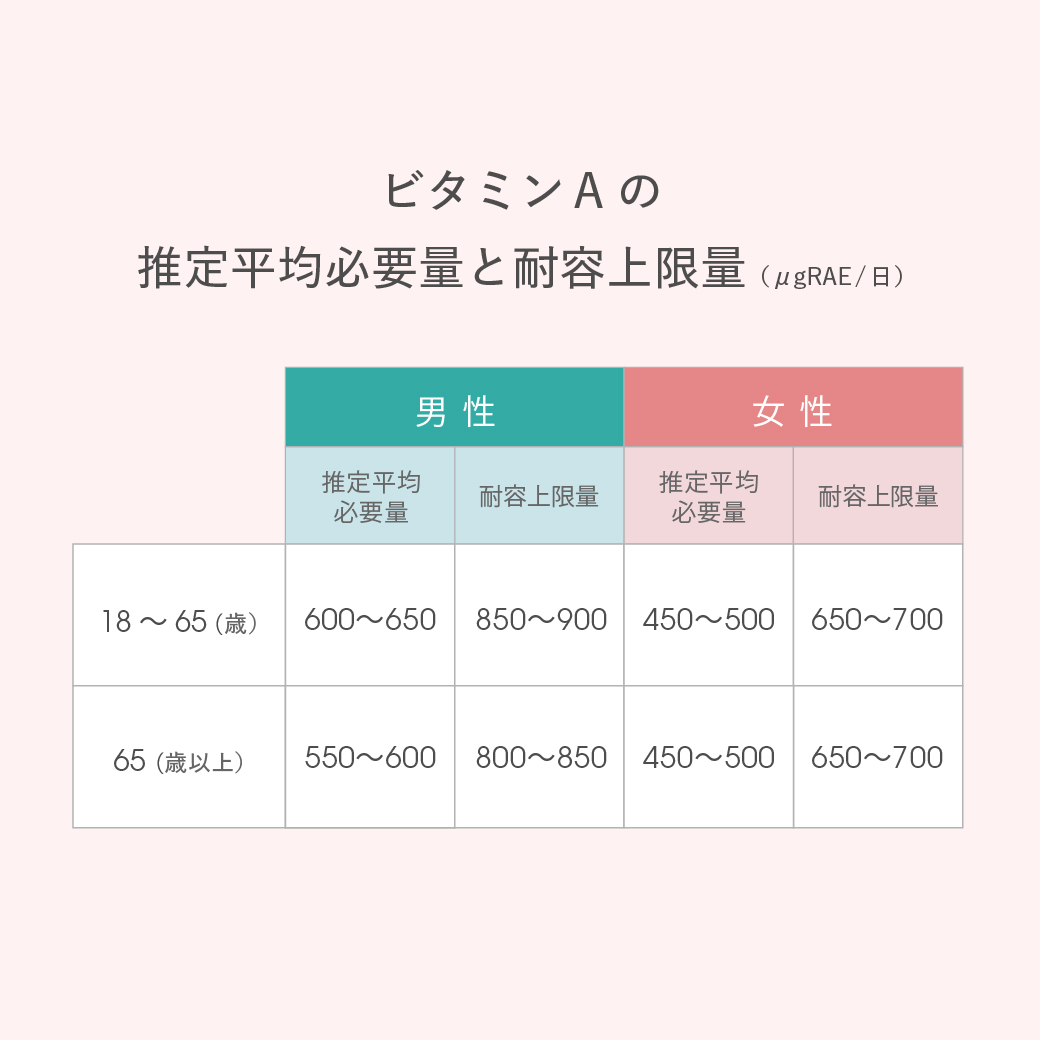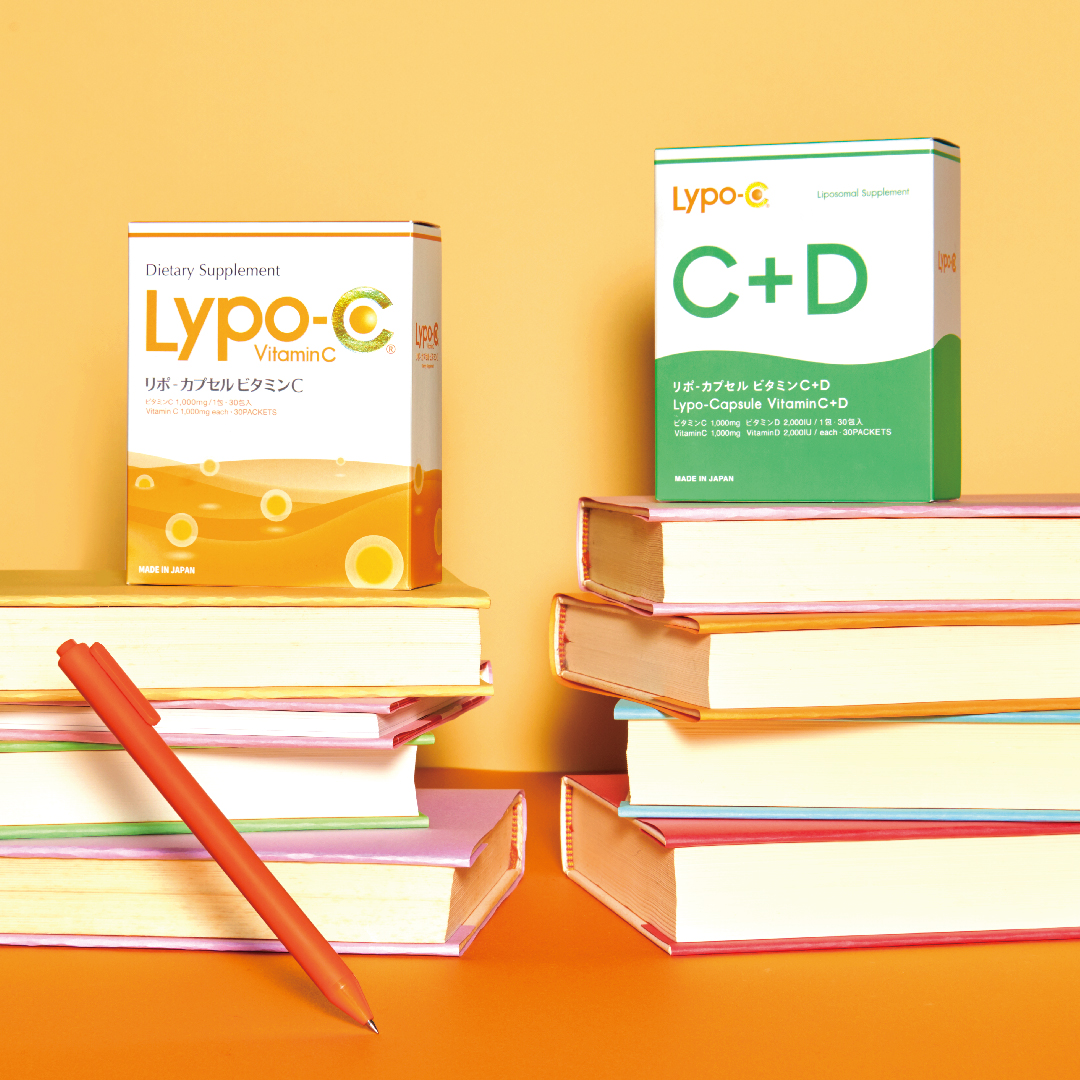
Foods containing Vitamin A: How it works and how to take it
SUMMARY
- ・Ranking of foods rich in vitamin A
- ・Knowledge about Vitamin A
- ・Nutrition that can be expected to have a synergistic effect when taken together with Vitamin A
- ・Points to remember when taking Vitamin A
- ·summary

Vitamin A is one of the nutrients known as vitamins, and it supports various functions in the body. However, most vitamins cannot be produced in the body. Therefore, it is essential to ingest them through food.
In this article, we will introduce vitamin A, which maintains the health of mucous membranes, including the eyes, and boosts resistance.
Foods with high vitamin A rankings
Foods that contain vitamin A come from a variety of animal and plant sources.
Learn which foods contain the most nutrients in each category, and use this knowledge to ensure a balanced and efficient intake.
● High in Vitamin AWhat about animal foods?
Animal foods that contain the most vitamin A (Meat, seafood and dairy products) is as follows:
・Pork or chicken liver
・Ankimo
·eel
·butter
・Eggs
※source: Standard Tables of Food Composition in Japan 2020 Edition (8th Edition): Ministry of Education, Culture, Sports, Science and Technology
Pork and chicken livers in particular contain over 10,000μg of vitamin A per 100g. This is well above the recommended daily intake of vitamin A, so they can be said to be extremely nutritious. However, vitamin A is a fat-soluble vitamin and tends to accumulate in the body, so taking too much of it can cause symptoms of overdose.
● High in Vitamin AWhat about vegetables?
Vitamin A is found in large amounts in dark-colored vegetables known as "green and yellow vegetables." Green and yellow vegetables are dark-colored vegetables that contain 600 μg or more of beta-carotene per 100 g.
This beta-carotene is called provitamin A, and a portion of the ingested amount is converted into vitamin A and absorbed by the human body.
・Chili
·Carrot
・Shiso
・Molokhiya
·spinach
·pumpkin
※source: Standard Tables of Food Composition in Japan 2020 Edition (8th Edition): Ministry of Education, Culture, Sports, Science and Technology
By consuming these vegetables, you can simultaneously consume beta-carotene and vitamin A. Beta-carotene has antioxidant properties that remove active oxygen that is harmful to the body, and is also expected to be effective in preventing lifestyle-related diseases.
● High in Vitamin AWhat about fruit?
Like vegetables, fruits and vegetables with dark colours are high in beta-carotene.
You can get a lot of beta-carotene from eating the following fruits:
·mango
・Apricot
·melon
・Kuko
·persimmon
·mandarin orange
※source: Standard Tables of Food Composition in Japan 2020 Edition (8th Edition): Ministry of Education, Culture, Sports, Science and Technology
Vitamin A is a nutrient that improves immunity and protects mucous membrane health. You can get Vitamin A from these familiar fruits.
Fruits that have high amounts of vitamin A per serving include watermelon and mandarin oranges.
● High in Vitamin AWhat about seaweed?
Seaweeds that are high in Vitamin A include:
・Rice seaweed
・Rock seaweed
・Aonori seaweed
・Hitomi grass
・Ulva
※source: Standard Tables of Food Composition in Japan 2020 Edition (8th Edition): Ministry of Education, Culture, Sports, Science and Technology
Amano-ri in particular contains a large amount of beta-carotene. It is not widely known that seaweed is highly effective in providing vitamin A, which keeps the skin moisturized and improves skin tone.
Some seaweeds contain more beta-carotene than vegetables.
Knowledge about Vitamin A
Vitamin A is a nutrient that cannot be produced in the body, so it is essential to ingest it through food. What role does vitamin A play in the body?
Here we will introduce the functions of vitamin A, as well as what happens if you have a vitamin A deficiency or if you take in too much.
Learn about the properties of Vitamin A and use it to help maintain your health.
● What is Vitamin A?
Vitamin A is one of the fat-soluble vitamins that dissolve easily in oil. It is an important nutrient that helps normalize vision, keeps skin and mucous membranes healthy, and increases resistance. Vitamin A is absorbed from the small intestine, stored mainly in the liver, and transported to each internal organ and tissue.
There are two main types of vitamin A. One is "retinol," which can be obtained from animal foods. The other is "provitamin A," which can be obtained mainly from plant foods.
Provitamin A is a precursor to vitamin A that is converted into vitamin A in the body when it is needed.
・α-carotene
・β-carotene
・β-cryptoxanthin
● Daily Intake of Vitamin A
Below are the estimated daily requirements and recommended amounts of Vitamin A.
Reference: Report of the Committee for Drafting the "Dietary Reference Intakes for Japanese (2020 Edition)"
What happens if you are deficient in Vitamin A?
A lack of vitamin A can make it difficult to see in dim light and eventually lead to night blindness. It can also cause the skin and mucous membranes to become dry and develop keratinization.
In particular, in the case of children, it is important to check because it is related to growth and can cause growth disorders. In the past, deficiency was common, but now that dietary habits have become more Westernized, vitamin A deficiency is rarely seen.
What happens if you take too much vitamin A?
Vitamin A is a fat-soluble vitamin that tends to remain in the body. It is known that excessive intake can cause health problems, so be careful about the amount you consume.
The main symptoms are headache, dizziness, and nausea. If excessive intake continues for a long period of time, liver dysfunction, cheilitis, and alopecia may occur.
Chronically excessive intake can lead to a decrease in bone density, weakening of the bones, and osteoporosis, so it is important to follow the recommended intake guidelines.
Guidelines for those pregnant or breastfeeding
During pregnancy, the recommended intake is the same as when not pregnant. Excessive intake during early pregnancy should be avoided as it may cause organ development abnormalities.
On the other hand, it is recommended that breastfeeding women consume more than non-pregnant women. However, there are risks associated with excessive intake, so be sure to follow the recommended intake guidelines.
Nutrients that can be expected to have a synergistic effect when taken together with Vitamin A
Vitamin A enhances antioxidant power through a synergistic effect when taken together with other vitamins and nutrients. It is particularly compatible with vitamins C and E and zinc, and a strong synergistic effect can be expected.
Vitamin E
Vitamin E works to protect mucous membranes, produce collagen, and strengthen the body, further enhancing its effectiveness.
Vitamin E is a nutrient that suppresses the oxidation of cell membranes and suppresses excess active oxygen.
It also has the effect of suppressing active oxygen, playing an important role in maintaining bodily functions.
Zinc
Vitamin A helps zinc absorption and zinc activates vitamin A, so these nutrients work very well together.
Zinc activates vitamin A, promoting its metabolism and enhancing its antioxidant effect.
In addition, zinc helps keep vitamin A in the mucous membranes, and also has the effect of suppressing the entry of viruses and bacteria through the mucous membranes. Zinc is also contained in white blood cells, which fight against viruses and bacteria when they enter the body.
As such, zinc and vitamin A work well together, making it advisable to take them at the same time.
Important points when taking Vitamin A
Since vitamin A is fat-soluble, it is recommended to eat it with foods that contain fat. By taking it together, the absorption rate increases significantly. It is a good idea to fry or deep-fry foods that contain vitamin A in oil.
In addition, adding dressings will also increase the efficiency of intake. However, excessive intake can have a negative effect on the body, so when using supplements or nutritional supplements, be sure to check the dosage instructions to avoid overdosing.
summary
In this article, we will introduce foods that are rich in Vitamin A.
Vitamin A is a nutrient that protects the health of the eyes and mucous membranes and boosts immunity. It can be obtained from both animal and plant foods, but the types are different: from animal foods it is taken into the body as retinol, and from plant foods it is mainly taken into the body as beta-carotene.
It is a fat-soluble vitamin, so its absorption efficiency is increased when taken with lipids. However, since it is a nutrient that takes time to be excreted from the body, be careful not to take in too much.
Article supervision

Aloha Saori Jiyugaoka Clinic Director
Professor Saori Todo
Aloha Saori Jiyugaoka Clinic
Graduated from Nippon Medical University School of Medicine. After training at Nippon Medical University Musashi-Kosugi Hospital, he entered the Department of Nephrology.
After that, he worked as the director of Zenninkai Maruko Clinic for 10 years.
Currently opening Aloha Saori Jiyugaoka Clinic. He claims to specialize in internal medicine, dermatology, and cosmetic dermatology.
Recommended articles
・Foods High in Vitamin D Ranking | Recommended Daily Intake
・ Foods rich in Vitamin C: Ranking and tips for getting the most out of it








